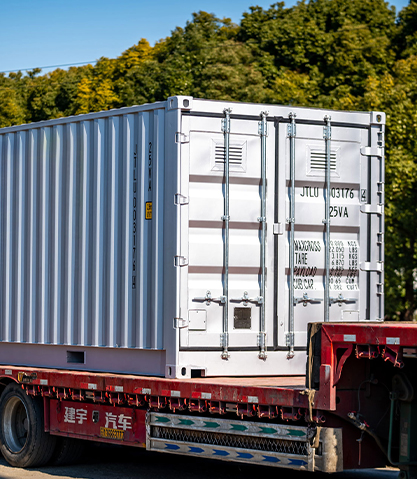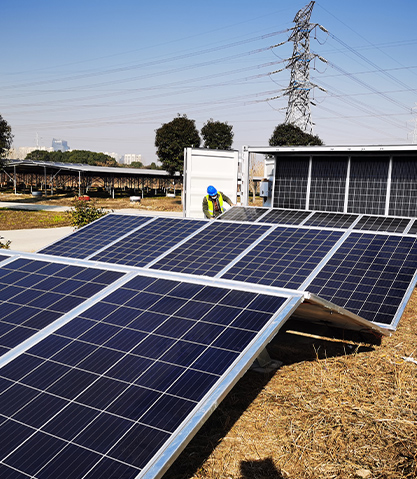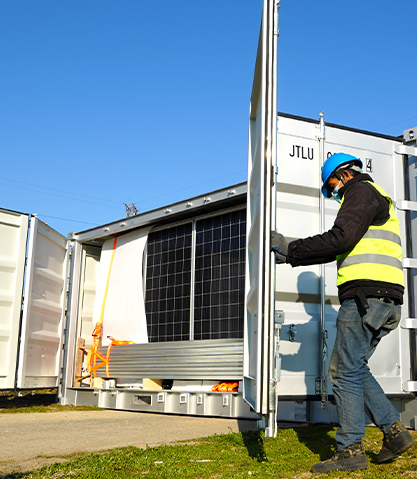Modular solar power station containers represent a revolutionary approach to renewable energy deployment, combining photovoltaic technology with standardized shipping container platforms. These self-contained units offer plug-and-play solar solutions for remote locations, emergency power needs, and grid supplementation. This comprehensive guide examines their design, technical specifications, deployment advantages, and emerging applications in the global energy transition.
Content
- 1 System Architecture and Core Components
- 2 Deployment Advantages Over Traditional Solar Farms
- 3 Innovative Design Features
- 4 Diverse Application Scenarios
- 5 Financial and Sustainability Metrics
- 6 Emerging Technological Enhancements
- 7 Installation and Maintenance Protocols
- 8 Global Market Trends and Adoption
- 9 Future Outlook and Industry Projections
- 10 Conclusion: The Modular Energy Revolution
System Architecture and Core Components
Standard 20'/40' Container Configuration
-
PV Module Array: 10-30kW capacity per container (expandable via stacking)
-
Battery Storage: 50-200kWh lithium-ion or flow battery systems
-
Power Conversion: Integrated hybrid inverters (AC/DC)
-
Control Systems: Smart monitoring with IoT connectivity
-
Thermal Management: Active/passive cooling systems
Technical Specifications
| Parameter | 20' Standard Unit | 40' High-Capacity Unit |
|---|---|---|
| Solar Capacity | 10-15kW | 20-30kW |
| Battery Storage | 50-100kWh | 150-200kWh |
| Continuous Output | 8-12kW | 15-25kW |
| Peak Efficiency | 94-96% | 94-96% |
| Weight | 3,000-4,500kg | 5,000-8,000kg |
Deployment Advantages Over Traditional Solar Farms
Mobility and Rapid Installation
-
Plug-and-play operation: <8 hours from delivery to power generation
-
No foundation requirements: Level ground or simple concrete pads
-
Relocation capability: Full system redeployment in 1-2 days
Performance Benefits
-
Precision alignment: Factory-optimized panel angles (15°-35° adjustable)
-
Integrated cleaning systems: Automated robotic or waterless solutions
-
Microclimate control: Maintains optimal operating temperatures
Innovative Design Features
Advanced Structural Engineering
-
Corrosion-resistant coatings: C5-M marine grade protection
-
Seismic reinforcement: Up to 0.5g seismic certification
-
Extreme weather hardening: Withstands -40°C to +60°C
Smart Energy Management
-
AI-powered forecasting: 24-hour generation predictions
-
Dynamic load balancing: Prioritizes critical loads
-
Remote firmware updates: Over-the-air system optimization
Diverse Application Scenarios
Industrial and Commercial Uses
-
Mining operations: Diesel displacement in remote sites
-
Construction power: Temporary site electrification
-
Data centers: Green energy supplementation
Emergency and Humanitarian
-
Disaster response: 72-hour deployment capability
-
Refugee camp electrification: Water pumping + lighting
-
Field hospitals: Reliable medical facility power
Grid Services
-
Peak shaving: 4-6 hour discharge cycles
-
Microgrid formation: 5+ container clusters
-
Frequency regulation: <100ms response time
Financial and Sustainability Metrics
Cost Analysis
| Component | % of System Cost | Lifespan |
|---|---|---|
| PV Modules | 35-40% | 25+ years |
| Battery System | 30-35% | 10-15 years |
| Power Electronics | 15-20% | 10-12 years |
| Container/Structure | 10-15% | 20+ years |
Environmental Benefits
-
Carbon reduction: 15-25 tons CO₂/year per unit
-
Land use efficiency: 3-5x denser than ground-mount
-
Recyclability: 85-90% material recovery potential
Emerging Technological Enhancements
Next-Generation Innovations
-
Bifacial solar integration: 8-12% yield increase
-
Second-life batteries: 30% cost reduction potential
-
Hydrogen hybrid systems: Long-duration energy storage
Smart Grid Integration
-
Blockchain energy trading: Peer-to-peer power exchange
-
Virtual power plants: Aggregated container fleets
-
Predictive maintenance: AI-driven component monitoring
Installation and Maintenance Protocols
Site Preparation Checklist
-
Accessibility: 3m clearance for deployment
-
Foundation: Compacted gravel or concrete pad
-
Interconnection: Pre-wired cable trenches
-
Safety: Lightning protection and grounding
Operational Maintenance
-
Quarterly inspections: Torque checks, seal integrity
-
Annual servicing: Inverter diagnostics, coolant replacement
-
Performance tracking: Remote monitoring dashboards
Global Market Trends and Adoption
Regional Implementation Models
-
Africa: Mobile microgrids for rural electrification
-
Europe: Urban resiliency hubs
-
Asia: Industrial park supplemental power
-
Americas: Disaster preparedness networks
Regulatory Considerations
-
UL 9540 certification: Energy storage safety
-
IEC 62109 standards: Power converter compliance
-
Local grid interconnection: Net metering policies
Future Outlook and Industry Projections
Technology Roadmap
-
2025: 40% efficiency perovskite solar integration
-
2030: Autonomous mobile power stations
-
2035: Self-deploying robotic container systems
Market Growth
-
CAGR: 28-32% projected through 2030
-
Deployment scale: 50,000+ units annually by 2027
-
Cost reduction: $0.85/W expected by 2025
Conclusion: The Modular Energy Revolution
Modular solar power station containers are transforming renewable energy deployment by combining standardization with cutting-edge technology. Their rapid deployability, scalability, and increasingly competitive economics position them as a cornerstone solution for addressing energy access challenges while supporting global decarbonization efforts. As battery densities improve and solar efficiencies increase, these containerized systems will likely become the default solution for temporary power, remote electrification, and grid resilience applications worldwide. The coming decade will see their evolution from specialized equipment to mainstream energy infrastructure components, fundamentally changing how societies access and distribute clean electricity.

 English
English 中文简体
中文简体 عربى
عربى



